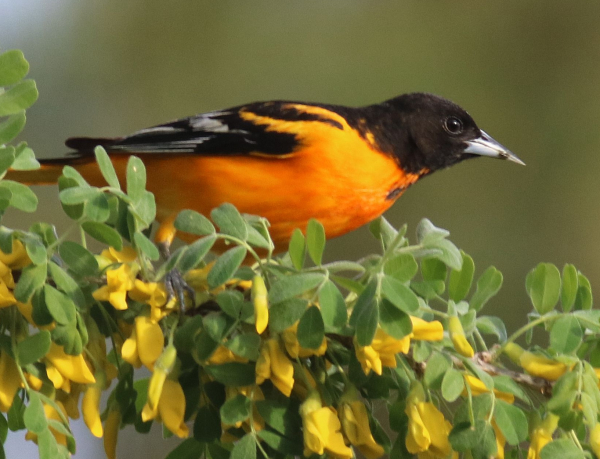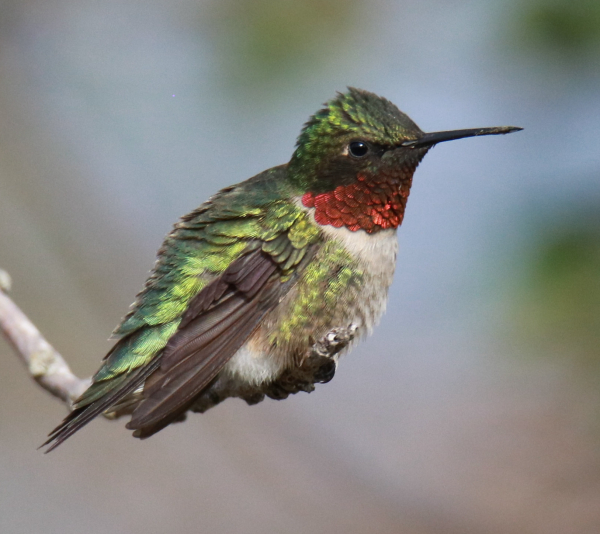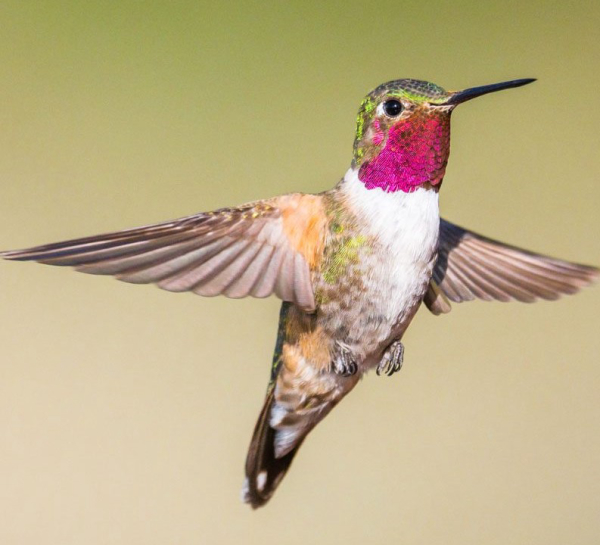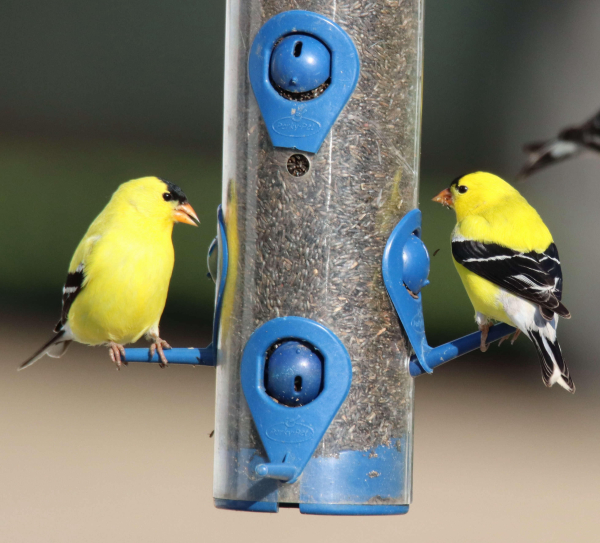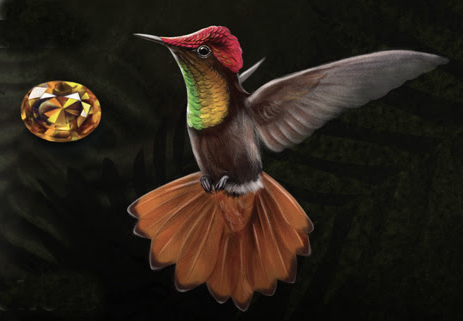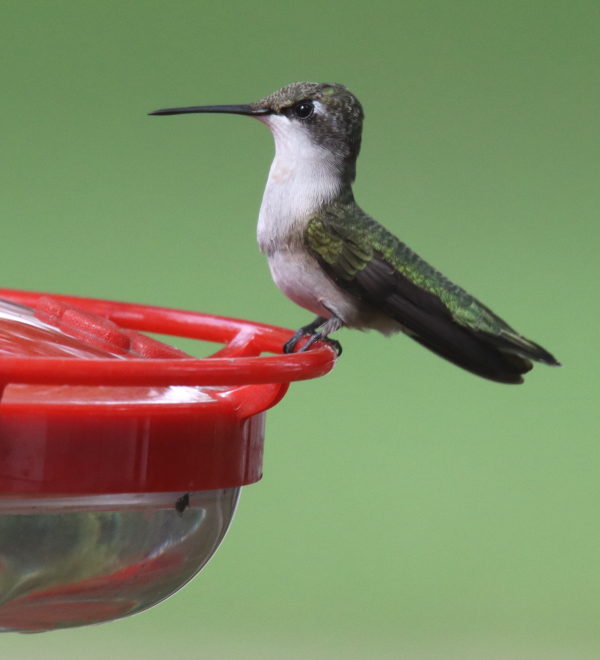Hummingbird Feeder Basics & Advanced
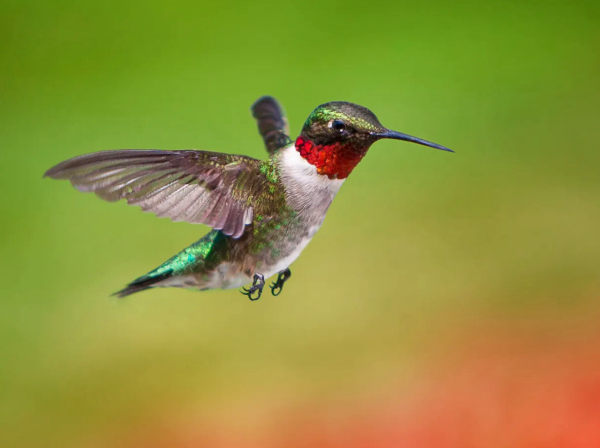
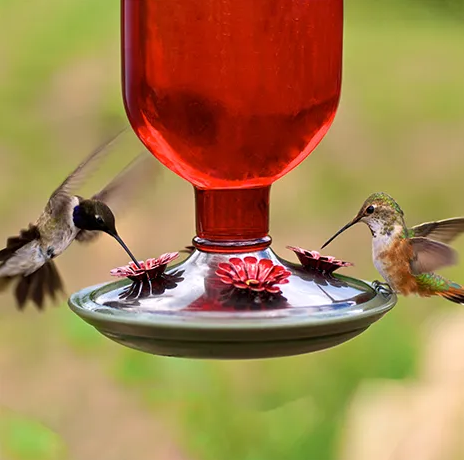
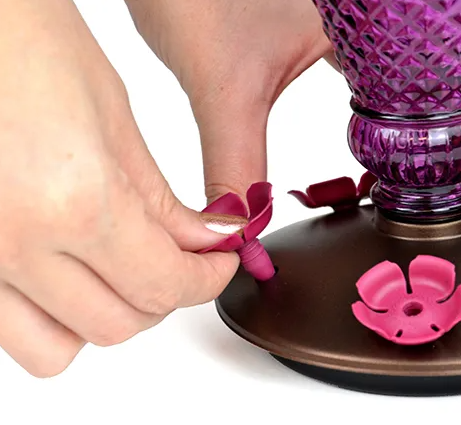
As late summer dispersal and migration continues, you may be looking for some tips and ideas about how to better serve hummingbirds in your yard, and perhaps at a business location or school. With that in mind let’s consider basics, some advanced ideas, and some potential problems: Problems like ants, bees, and wasps; Basics like cleaning feeders and providing sugar-water nectar, and Advanced aspects of hummingbirding like keeping feeders up after the last migrants pass through, just in case a vagrant Rufous Hummingbird finds its way to your yard.
Keeping it clean – Keeping your hummingbird feeder clean is easy, but like any other effort, it’s good to keep a regular schedule. Twice a week is a good cleaning plan, and that will keep the nectar clean and fresh too. Of course, if it’s particularly hot, or if you have many hummers feeding at your feeders, you may need to increase that cleaning and re-filling schedule.
Sugar-water ratio – The standard hummingbird sugar-water mix is 4 parts water to 1 part white cane sugar (never use honey, brown sugar, or sugar substitutes). We use a shot glass to easily measure parts although a measuring cup might be even better. This 4-to-1 mixture best represents the sugar content of natural nectar produced in flowers. Mix it yourself or buy one of the many options for pre-mixed hummingbird sugar-water nectar that use the same sugar-water mix ratio.
Combating ants – It’s easy to keep ants from your feeder, just install an ant moat above your feeder. It’s even easier if you have a feeder with a built-in ant moat, an element becoming more common on new feeders. The trick is to make sure the ant moat is filled with water. If you don’t already have one, an ant moat can be purchased for just a couple bucks, and it’s invaluable to keep crawling insects from reaching your feeder by providing a water moat they will not cross – as long as you keep water in the moat (check it daily).
Beating bees – Like hummingbirds, bees are super-important pollinators, so Deter bees, don’t harm them. The best way to avoid bee problems is to use a hummingbird feeder with bee guards, and in some cases you may be able to install bee guards on a feeder that lacks guards. Bee guards are tiny cages that fit over feeding ports that keep bees from reaching the nectar in the feeder while permitting hummingbirds to simply insert their bill through the “cage” openings.
Some new hummingbird feeders have specially designed feeder port inserts that resemble a flower and extend the length of the opening to the nectar basin, which keeps bees from accessing the sugar-water (refer to the feeder illustrations accompanying this article). These feeder ports and bee guards also keep wasps and other bugs away too.
Never insecticide or oils – Don’t use insecticides to combat insect problems that may arise; keeping your feeders, feeding station, and surrounding areas free of poisons is a no-brainer. The idea is to Deter bugs, not to destroy them. Similarly, don’t try to keep bugs away by smearing petroleum jelly, hand cream, grease, oil, or other substances on hangers or other feeding station equipment. Keep the area clean so hummingbirds and other birds don’t get these substances smeared on their feathers, feet, or beaks.
At home, at work, and at school – Your feeding station is likely ready for migrating hummingbirds, and you are probably already hosting some hummers already; but why not introduce the idea of installing a shepherd’s crook with a hanging hummingbird feeder outside your business, or your boss’s business. It can be a nice diversion for people in a waiting room, or a welcoming introduction to shoppers, a touch of nature outside a construction company – you get the idea. It may also be a nice addition outside a neighborhood school or your child’s science classroom. It’s worth visiting with a teacher, or your boss, to see if you can add a spark of interest in hummingbirds to introduce others to these interesting birds, and to benefit hummingbirds in another location.
Hummingbird feeders are small, clean, and economical to get started and keep active. Of course, you may need to take it upon yourself to monitor, fill, and clean a feeder at work, or even at the school, but it’s well worth it to introduce co-workers and customers, students and teachers to the thrill of viewing hummingbirds and learning about them.
Late-season hummingbird feeders – Many birders are keeping their hummingbird feeders available later in the season, long after the “local” hummingbirds have migrated through to winter ranges. Why? The possibility of an off-course hummingbird venturing by – usually a Rufous Hummingbird, but it could be any of a dozen species of western and Latin hummingbirds that have been documented far east of their summer range – as far east as the Atlantic Coast and points in between, and as far northeast as Massachusetts.
By keeping a nectar feeder available, you aren’t encouraging these birds to stay later, but you are helping them when they fly off-course, or delay their migration to warmer climes. It’s best to position a late-season feeder in a location that’s protected from wind, with nearby perching areas that get warming sunshine, sheltered from breezes. In some cases, birders even bring nectar feeders inside overnight during periods late in the fall when temperatures may dip below 32 degrees for a couple hours; returning them outside the next morning.
With that interesting insight that could extend your hummingbirding season and bring a memorable rare visitor when you least expect it, we hope this list of ideas, suggestions, and no-no’s is helpful and thoughtful, even thought-provoking. The main point is that as beginners and advanced birders, we are all attracted to hummingbirds and do what we can to benefit them in simple ways that give us close looks at these magnificent creatures. Enjoy this season’s hummingbird migration while it lasts! And to all the sunbelt birders who enjoy hummingbirds year-round, enjoy them and marvel at them every day!
Share your backyard birding experiences and photos at editorstbw2@gmail.com


